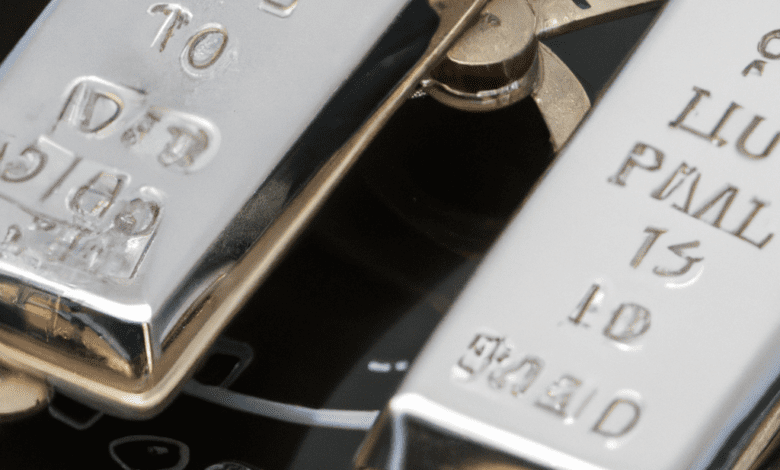Platinum vs. Palladium: Navigating the Investment Landscape of Precious Metals

In the world of precious metals, platinum and palladium stand as two alluring options for investors seeking to diversify their portfolios. Each metal possesses unique properties and applications, from industrial uses in catalytic converters to their roles in jewelry and electronics. However, as market dynamics shift and demand fluctuates, the question arises: which metal is the better investment? This article delves into the intricacies of platinum and palladium, starting with a foundational understanding of their characteristics and market behaviors. We will explore historical price trends and current volatility to assess their potential as long-term investments. Finally, we’ll guide you through effective investment strategies, weighing the risks and rewards of each metal. Whether you’re a seasoned investor or new to the precious metals market, this comprehensive analysis will equip you with the knowledge needed to make an informed decision. Join us as we unravel the complexities of platinum and palladium, determining which metal may best suit your investment goals.
- 1. **"Understanding the Basics: Platinum and Palladium Explained"**
- – An overview of the properties, uses, and market dynamics of both metals.
- 2. **"Market Trends and Price Volatility: A Deep Dive into Investment Potential"**
1. **"Understanding the Basics: Platinum and Palladium Explained"**
Platinum and palladium are both precious metals that belong to the platinum group metals (PGMs), which also includes rhodium, ruthenium, iridium, and osmium. While they share some similarities, they have distinct properties, uses, and market dynamics that can influence their investment potential.
Platinum is a dense, malleable metal known for its resistance to corrosion and tarnish. It is primarily used in industrial applications, particularly in catalytic converters for vehicles, which help reduce harmful emissions. Additionally, platinum is popular in the jewelry industry due to its lustrous appearance and hypoallergenic qualities. As a finite resource, its extraction is labor-intensive, primarily occurring in South Africa and Russia, leading to fluctuations in supply that can impact its price.
Palladium, on the other hand, is lighter and has a lower melting point compared to platinum. Like platinum, it is also widely used in automotive catalysts, but it has found increased applications in electronics, dentistry, and hydrogen storage technologies. The demand for palladium has surged in recent years, particularly due to the tightening of emission regulations and the growing popularity of gasoline-powered vehicles that utilize palladium-based catalysts. Most of the world's palladium supply comes from Russia and South Africa as well, making it susceptible to geopolitical tensions and regulatory changes.
Investors need to consider the unique supply and demand dynamics of each metal. While platinum has traditionally been more expensive than palladium, recent years have seen palladium prices soar due to a combination of robust demand and supply constraints. Understanding these fundamentals is crucial for anyone looking to invest in either metal, as their market trends can differ significantly based on economic conditions, technological advancements, and shifts in consumer preferences.
– An overview of the properties, uses, and market dynamics of both metals.
Platinum and palladium are precious metals that share several characteristics but differ significantly in their properties, uses, and market dynamics, making each an appealing investment option under different circumstances.
Platinum is a dense, malleable metal with a silvery-white appearance, known for its resistance to corrosion and oxidation. It has a high melting point and excellent catalytic properties, making it valuable in industrial applications, particularly in the automotive sector for catalytic converters, which help reduce harmful emissions. Beyond automotive uses, platinum is also employed in jewelry, electronics, and various chemical processes due to its inertness and durability.
Palladium, on the other hand, is lighter and less dense than platinum, with a similar silvery-white hue. It is also highly resistant to oxidation and corrosion, but it has a lower melting point compared to platinum. Palladium's primary industrial application is also in catalytic converters, where it has gained prominence due to its effectiveness in reducing emissions from gasoline engines. Additionally, palladium is increasingly utilized in electronics, dentistry, and hydrogen storage, expanding its market reach.
In terms of market dynamics, platinum and palladium have historically experienced different supply and demand patterns, leading to fluctuating prices. Platinum is often mined in larger quantities, primarily in South Africa and Russia, while palladium is rarer and has seen a surge in demand, particularly as automakers shift toward gasoline vehicles that require more palladium in their catalytic converters. This shift has led to significant price increases for palladium over the past few years, sometimes surpassing those of platinum.
Investors must also consider the broader economic context, as both metals are influenced by factors such as global automotive demand, regulatory changes, and technological advancements. For instance, the transition to electric vehicles may impact the future demand for both metals, albeit in different ways. Additionally, geopolitical factors and mining disruptions can affect supply, further influencing prices.
In summary, while both platinum and palladium have unique properties and uses, their market dynamics are shaped by differing demand drivers and supply conditions. Understanding these nuances is crucial for investors looking to determine which metal may offer a better investment opportunity based on current and future market trends.
2. **"Market Trends and Price Volatility: A Deep Dive into Investment Potential"**
When evaluating the investment potential of platinum and palladium, understanding market trends and price volatility is crucial. Both metals have unique market dynamics that influence their prices and appeal to investors.
Historically, platinum has been considered a more stable investment, often trading at a premium compared to gold due to its rarity and application in various industrial processes, particularly in the automotive sector for catalytic converters. However, recent years have seen significant fluctuations in platinum prices, driven by changes in demand from the automotive industry, where the shift towards electric vehicles (EVs) has reduced the need for platinum in combustion engines. This shift has resulted in a bearish sentiment towards platinum, causing prices to dip, at times falling below those of palladium.
Palladium, on the other hand, has witnessed a remarkable surge in demand, primarily due to its critical role in the production of catalytic converters for gasoline engines. As stricter emissions regulations have taken hold globally, palladium's price has skyrocketed, reaching all-time highs in recent years. This surge, however, has not been without its volatility. The palladium market has experienced significant price swings due to supply constraints from major mining operations, geopolitical tensions, and changes in demand stemming from the global automotive market's evolution.
Investors must also consider the broader economic factors influencing both metals. For instance, the ongoing push for greener technologies and the rising popularity of EVs may lead to decreased demand for both platinum and palladium in traditional applications. However, the potential for platinum to be utilized in hydrogen fuel cells offers a glimmer of hope, suggesting that it could regain favor in a shifting market landscape.
Furthermore, the investment landscape for these metals is also affected by speculative trading and investor sentiment. The introduction of exchange-traded funds (ETFs) focused on both platinum and palladium has made it easier for investors to gain exposure, contributing to price volatility as market sentiment shifts. In addition, macroeconomic factors such as inflation rates, currency fluctuations, and geopolitical events can induce further volatility, making these metals both an opportunity and a risk for investors.
In summary, while both platinum and palladium present unique investment opportunities, their market trends and price volatility must be carefully analyzed. Investors should weigh the current supply-demand dynamics, technological advancements, and broader economic factors to make informed decisions about which metal aligns better with their investment goals and risk tolerance.
In conclusion, the decision between investing in platinum or palladium ultimately hinges on a variety of factors, including market trends, industrial demand, and individual investment goals. Both metals have unique properties and applications that influence their value, with platinum often favored for its use in jewelry and catalytic converters, while palladium has gained prominence in the automotive industry due to its essential role in emission control technology.
When analyzing market trends, investors must consider the historical price volatility of each metal and the external factors that can impact their value, such as economic conditions and technological advancements. As we have seen, palladium has experienced significant price increases in recent years, driven by robust demand, particularly in the automotive sector. Conversely, platinum's market has faced challenges, including overproduction and fluctuating demand, which can affect its price stability.
Ultimately, both platinum and palladium present unique investment opportunities, but they also come with their own risks and rewards. Investors should carefully assess their financial goals, risk tolerance, and market outlook before making a decision. Diversifying one’s investment portfolio to include both metals may also be a prudent strategy, allowing investors to capitalize on the strengths and mitigate the weaknesses of each. As always, thorough research and staying informed about market developments will be crucial in navigating the complexities of these precious metals and making sound investment choices.





